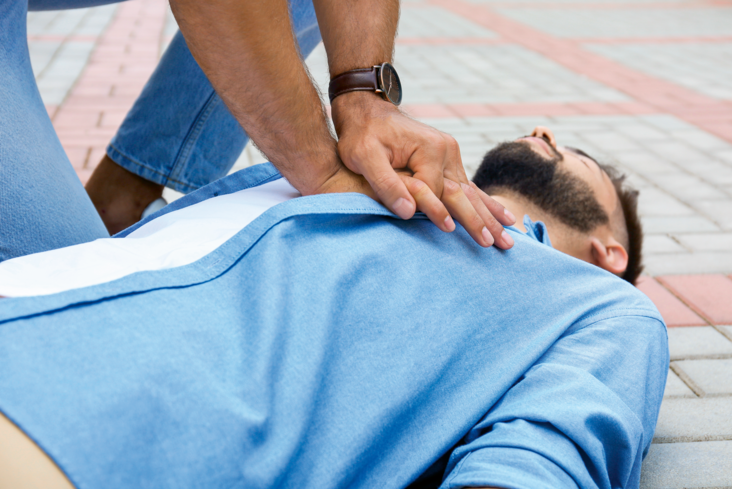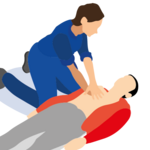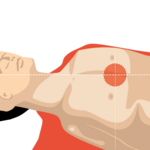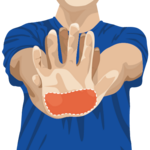Around 8000 people in Switzerland suffer from sudden cardiac arrest every year. A person will die within a few minutes if, in addition to raising the alarm, resuscitation measures are not immediately initiated and maintained until the emergency services arrive on the scene.
It is important to know what to do if a person’s heart stops beating, as the lack of blood supply to the brain can lead to severe brain damage within a matter of minutes. However, many people have an unfounded fear of doing something wrong and refrain from taking any action.
Most importantly: provide assistance until medical help arrives
What are the symptoms of a cardiac arrest?
The two most important warning signs: a person suddenly becomes unconscious and stops breathing. When this happens, there is no time to lose and you should immediately call emergency number 144 or alert Rega via emergency number 1414 or the Rega app. Do this yourself or explicitly ask a passer-by to do so.
Chest compressions must be commenced immediately and continued until the patient responds or medical professionals arrive. Chest compressions are physically demanding: it is therefore advisable to call for people nearby to help so that you can take turns and someone can fetch a defibrillator.






